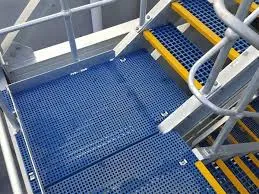
-
 Afrikaans
Afrikaans -
 Albanian
Albanian -
 Amharic
Amharic -
 Arabic
Arabic -
 Armenian
Armenian -
 Azerbaijani
Azerbaijani -
 Basque
Basque -
 Belarusian
Belarusian -
 Bengali
Bengali -
 Bosnian
Bosnian -
 Bulgarian
Bulgarian -
 Catalan
Catalan -
 Cebuano
Cebuano -
 China
China -
 China (Taiwan)
China (Taiwan) -
 Corsican
Corsican -
 Croatian
Croatian -
 Czech
Czech -
 Danish
Danish -
 Dutch
Dutch -
 English
English -
 Esperanto
Esperanto -
 Estonian
Estonian -
 Finnish
Finnish -
 French
French -
 Frisian
Frisian -
 Galician
Galician -
 Georgian
Georgian -
 German
German -
 Greek
Greek -
 Gujarati
Gujarati -
 Haitian Creole
Haitian Creole -
 hausa
hausa -
 hawaiian
hawaiian -
 Hebrew
Hebrew -
 Hindi
Hindi -
 Miao
Miao -
 Hungarian
Hungarian -
 Icelandic
Icelandic -
 igbo
igbo -
 Indonesian
Indonesian -
 irish
irish -
 Italian
Italian -
 Japanese
Japanese -
 Javanese
Javanese -
 Kannada
Kannada -
 kazakh
kazakh -
 Khmer
Khmer -
 Rwandese
Rwandese -
 Korean
Korean -
 Kurdish
Kurdish -
 Kyrgyz
Kyrgyz -
 Lao
Lao -
 Latin
Latin -
 Latvian
Latvian -
 Lithuanian
Lithuanian -
 Luxembourgish
Luxembourgish -
 Macedonian
Macedonian -
 Malgashi
Malgashi -
 Malay
Malay -
 Malayalam
Malayalam -
 Maltese
Maltese -
 Maori
Maori -
 Marathi
Marathi -
 Mongolian
Mongolian -
 Myanmar
Myanmar -
 Nepali
Nepali -
 Norwegian
Norwegian -
 Norwegian
Norwegian -
 Occitan
Occitan -
 Pashto
Pashto -
 Persian
Persian -
 Polish
Polish -
 Portuguese
Portuguese -
 Punjabi
Punjabi -
 Romanian
Romanian -
 Russian
Russian -
 Samoan
Samoan -
 Scottish Gaelic
Scottish Gaelic -
 Serbian
Serbian -
 Sesotho
Sesotho -
 Shona
Shona -
 Sindhi
Sindhi -
 Sinhala
Sinhala -
 Slovak
Slovak -
 Slovenian
Slovenian -
 Somali
Somali -
 Spanish
Spanish -
 Sundanese
Sundanese -
 Swahili
Swahili -
 Swedish
Swedish -
 Tagalog
Tagalog -
 Tajik
Tajik -
 Tamil
Tamil -
 Tatar
Tatar -
 Telugu
Telugu -
 Thai
Thai -
 Turkish
Turkish -
 Turkmen
Turkmen -
 Ukrainian
Ukrainian -
 Urdu
Urdu -
 Uighur
Uighur -
 Uzbek
Uzbek -
 Vietnamese
Vietnamese -
 Welsh
Welsh -
 Bantu
Bantu -
 Yiddish
Yiddish -
 Yoruba
Yoruba -
 Zulu
Zulu
Efficient Solutions for Oil and Gas Separation with Advanced Demister Technology
Understanding GRP Demisters Importance and Applications
Glass Reinforced Plastic (GRP) demisters are crucial components in various industrial applications, particularly in the gas and oil sectors. These demisters are designed to facilitate the separation of droplets from vapor streams, ensuring that gaseous outputs meet specific standards of purity and efficiency. With increasing environmental regulations and a heightened emphasis on operational efficiency, the role of GRP demisters has become ever more significant.
Understanding GRP Demisters Importance and Applications
One of the primary advantages of utilizing GRP for demisters is its resilience against harsh operating conditions. Unlike traditional materials like metal, which can corrode or degrade over time, GRP maintains its integrity and performance under extreme temperatures and corrosive environments. This quality not only extends the lifespan of the equipment but also reduces maintenance costs, making it a favored choice among industries such as petrochemicals, wastewater treatment, and power generation.
grp demister

In addition to their mechanical benefits, GRP demisters contribute to enhanced process efficiency. By ensuring that vapor streams are free from unwanted liquid droplets, these devices help optimize downstream processes such as combustion or distillation. This optimization leads to higher energy efficiency, reduced emissions, and overall better compliance with environmental standards.
Applications for GRP demisters are diverse and include separation processes in refinery operations, gas processing plants, and even in HVAC systems to remove moisture from air streams. As industries continue to evolve and the demand for effective separation technologies grows, the significance of GRP demisters will likely increase.
In summary, GRP demisters play a vital role in industrial applications by effectively separating liquids from gases, thereby ensuring operational efficiency and environmental compliance. Their durability, efficiency, and cost-effectiveness make them a key component in modern industrial systems, shaping the future of vapor-liquid separation technologies. Understanding their functionality and applications is essential for professionals in engineering and industrial operations aiming for optimal performance.









